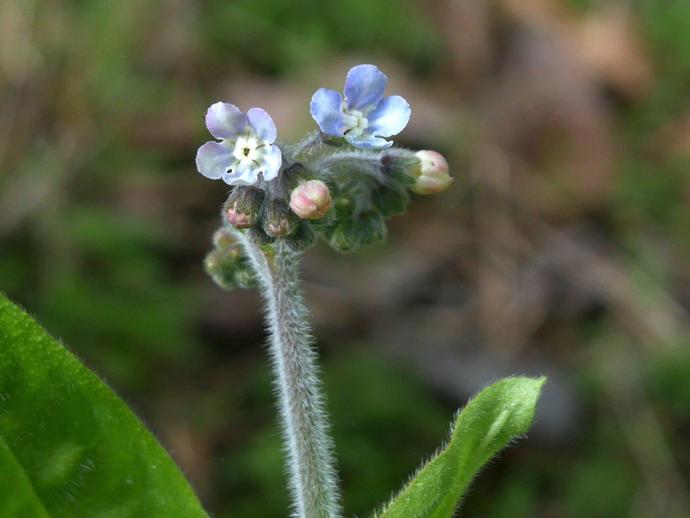April 23, 2020
The small blue flowers of Cynoglossum virginianum (commonly known as "wild comfrey") are easy to miss, since they're often pretty tiny in comparison to the rest of the plant. The Greek name "Cynoglossum" roughly translates to "dog's tongue," and the plant is sometimes called "blue houndstongue." This is because the size and shape of the leaves bear a striking resemblance to -- you guessed it -- a dog's tongue!
This wild plant is native to the eastern U.S. and much of Canada, and it thrives in habitats with high humidity, low temperatures and low competition. For these reasons, forests are a good place to spot this plant. It's believed that Cynoglossum virginianum is adapted to thrive following occasional forest fires, as these fires help eliminate the competition. It's been anecdotally observed that more of these plants are found in forests that have experienced fires in the recent past.
Back in the 1800s, herbalists believed that this plant could be used as a sedative and to treat respiratory infections and other ailments. However, large doses of this plant can damage your liver, so like most things you find in the woods, it's best to play it safe and leave it alone. #BenInNature
About this post: Social distancing can be difficult, but the next few weeks present a great opportunity to become reacquainted with nature. While he is working from home, Administrator of Science Ben Williams is venturing outdoors each day to record a snapshot of the unique sights that can be found in the natural world.
This post brought to you by VMNH Corporate Supporter King's Grant Retirement Community.

 Hours & Admissions
Hours & Admissions Directions
Directions

